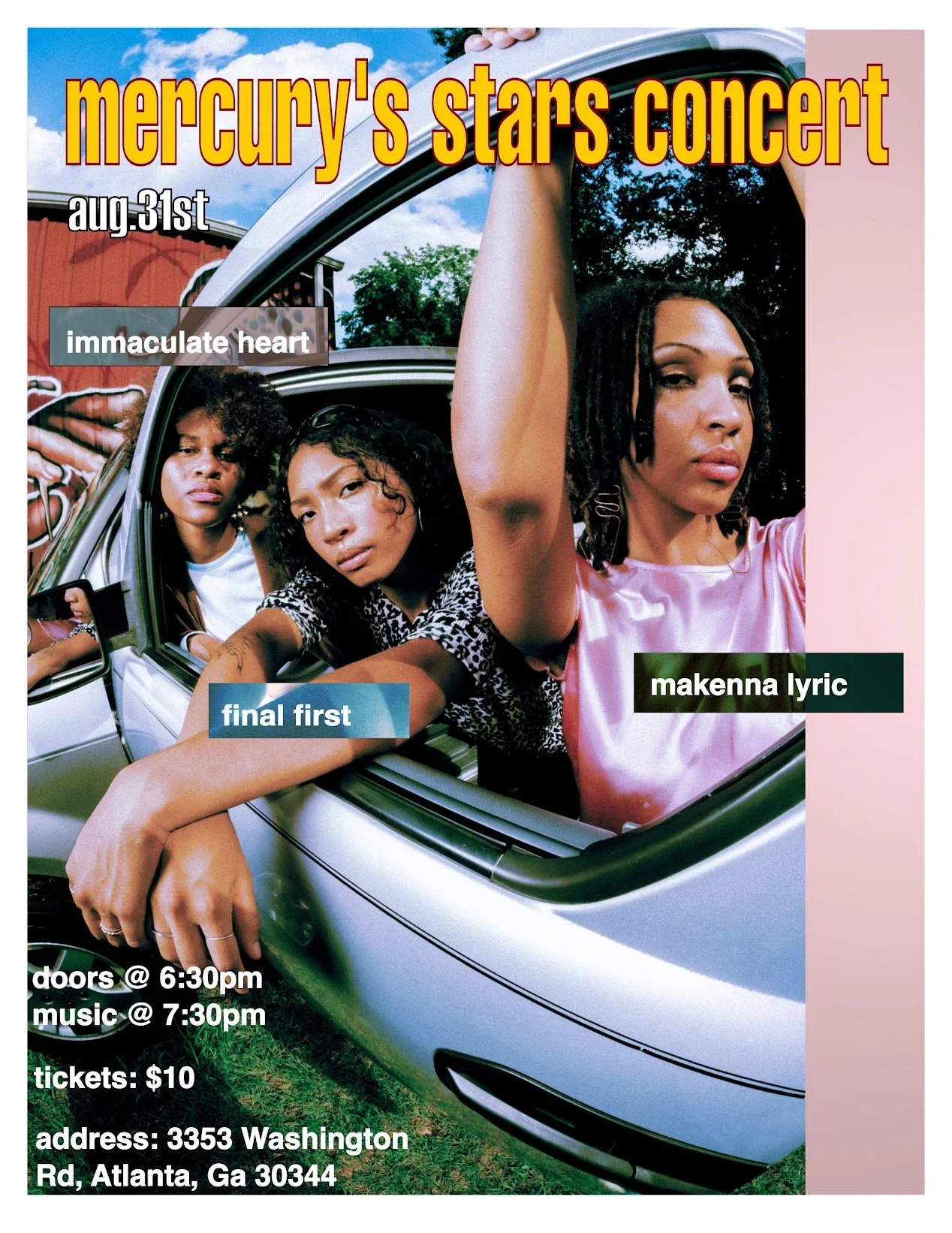Behind the Lens: The Making of Mercury’s Stars
by Maia Helvy
Being a filmmaker has always been a dream of mine—even if I didn’t realize it at first. As a kid, I was constantly capturing the world around me. I was lucky to have someone like my uncle, an educator and filmmaker, who recognized that spark in me early on. Watching him make films in his early twenties had a profound impact on me. I remember going to his screenings, sitting beside him as he edited, and even sneaking peeks at a horror short he made—despite my mom thinking it was way too inappropriate for my age. One thing that always stood out in his work was how centered it was on Black representation. That wasn’t something I was used to seeing. I remember asking him why it mattered so much to him, and he told me something I’ve carried with me ever since: “Make sure your stories represent who you are. Don’t let anyone else tell you what stories you should tell—because the most powerful ones come from your truth.” He gave me some of my first cameras and even more importantly, gave me permission to tell stories that felt real to me.
My uncle and I when I was younger
That encouragement has taken me far—especially now, growing into myself as a Black Queer, non-conforming filmmaker. There was a time when sharing my work terrified me. It felt like putting my heart out for everyone to dissect. But once I started documenting my community, I felt less alone. I started to see my work as a mirror—not just of me, but of everything and everyone around me. That’s what led me to Mercury’s Stars, a poetic documentary centered on three Geminis—who also happen to be some of my closest friends. From the beginning, this felt like my most ambitious project. Capturing the lives of three big personalities was a challenge, but one I was ready to face. What pushed me forward was the fact that this wasn’t just about making a film—it was about telling the story of my people, my community.
Atlanta is a hub for music and film, and the intersection of those two worlds inspired this piece. The Black Queer and non-conforming artists I’m surrounded by are literally shifting culture, and I knew it was important to document that—especially in a world where our stories are so often left out. But making this film hasn’t been easy. It’s revealed the complexities of friendship, of chosen family, of creative collaboration. There were moments when everything felt like it was falling apart. Times when it seemed like no one’s heart was in it anymore. I considered walking away. But I had to remind myself—Mercury’s Stars isn’t just for me or my friends. It’s for people like us who rarely see ourselves portrayed truthfully. It’s for those who need to know that despite how hard this world can be, we still live with joy, with love, and with community. That’s what kept me going. Even with all the interpersonal ups and downs, the documentary captures something real. It shows us in our fullness—our humor, our struggles, our talent, and our connection.
One of the first projects we all worked on together was a music video called The Kiss, which I shot and directed for Makenna Lyric, one of the featured artists in Mercury’s Stars. That was almost three years ago, and I remember being terrified. I’d never directed anything before. Makenna knew I had an old-school camera and wanted to shoot on it. Her trust in me was both overwhelming and empowering. We story-boarded the whole thing with help from my sister, who’s an animator. We scouted locations in between classes and work shifts. The entire project was a community effort. On a hot June day, we gathered a big group of friends—including Jules, another artist in the doc—to bring it to life. In post-production, Mia, who’s also featured in Mercury’s Stars, helped edit. We were crammed into Makenna’s tiny apartment, hovering over a single computer, each of us adding our touch to the final cut. I struggled with self-doubt throughout. I worried that the video was “too gay,” or that my camera work wasn’t professional enough. But with the support of Makenna and Mia, I kept going. That video ended up being screened at multiple festivals and racked up over 200,000 views on YouTube. It was the first time I realized: I can do this. My voice matters. That project was the seed that eventually grew into Mercury’s Stars.
Mercury’s Stars: “Makenna’s Story”, is only the first project in this three part series. This film isn’t perfect. It reflects joy, but it also reflects tension and the unspoken moments between friends. And that’s what makes it real. It’s not polished because our lives aren’t polished. It’s messy, like us. It’s beautiful, like us. And I think that’s exactly what we need more of.






